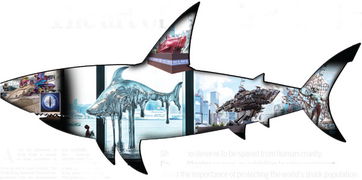Introduction:
For many, fishing is a relaxing and rewarding pastime that offers a chance to connect with nature and unwind. However, for beginners, the world of fishing can seem daunting, especially when it comes to the intricacies of baiting. Baiting is a crucial aspect of fishing, as it involves attracting fish to your hook. In this article, we'll delve into the essential tips and techniques that will help新手 (newcomers) to the art of fishing master the art of baiting.
Understanding Baiting:
Before we dive into the specifics of baiting techniques, it's important to understand what baiting actually is. Baiting refers to the process of placing food or lure in the water to attract fish. This can be done using natural bait, such as worms, insects, or fish, or artificial lures designed to mimic the movement and appearance of real prey.
Choosing the Right Bait:
The first step in mastering the art of baiting is to choose the right bait. This depends on several factors, including the type of fish you're targeting, the season, and the conditions of the water body.
Target Fish Species: Different fish species have different preferences when it comes to food. For instance, bass are often attracted to live bait like worms or minnows, while catfish might be more interested in cut bait or stink bait.
Seasonal Considerations: Fish feeding patterns can change with the seasons. In spring, fish are often more active and may be more attracted to live bait. In summer, they might prefer more durable baits like artificial lures or prepared baits.
Water Conditions: The clarity of the water, temperature, and presence of vegetation can also influence bait choice. Clear water may require more subtle lures, while murky water might benefit from brighter or more vibrant baits.
Types of Bait:
Natural Bait: This includes live bait like worms, insects, minnows, and leeches, as well as dead bait like fish or chicken liver. Natural bait is often preferred by fish because it closely resembles their natural food sources.
Artificial Lures: These are designed to mimic the movement and appearance of real prey. They can be used in various forms, such as spinnerbaits, crankbaits, jigs, and soft plastics.
Prepared Baits: These are commercially prepared baits that come in a variety of forms, including dough baits, corn, and cheese. They are convenient and can be effective for a wide range of fish species.
Baiting Techniques:

Drop Shot Technique: This involves attaching a small weight to your line and then dropping the bait to the desired depth. It's particularly effective for fishing in clear water or around structure.
Carolina Rig: This rig involves a sliding weight, a leader, and a hook. The weight is placed on the line, and the bait is attached above it. This rig is great for fishing in heavy cover or for species like bass.
Texas Rig: This rig is similar to the Carolina rig but uses a bullet weight instead of a sliding weight. It's often used with soft plastics and is effective for a variety of fish species.
Worming: This involves threading a worm onto a hook and then presenting it in a natural manner. It's a simple yet effective technique for many species.
Maintaining Your Bait:
Keep It Fresh: Whether you're using natural or artificial bait, it's important to keep it fresh. For natural bait, this means keeping it alive as long as possible. For artificial bait, it's about maintaining its shape and color.
Change It Regularly: If you're using live bait, it's important to change it regularly to ensure it's still effective. For artificial bait, if it becomes damaged or loses its color, it's time to replace it.
Conclusion:
Baiting is a skill that takes time to master, but with practice and patience, even beginners can become proficient. By understanding the basics of baiting, choosing the right bait, and mastering the techniques, you'll be well on your way to becoming a successful angler. Remember, fishing is not just about catching fish; it's about enjoying the experience and connecting with nature. Happy fishing!












